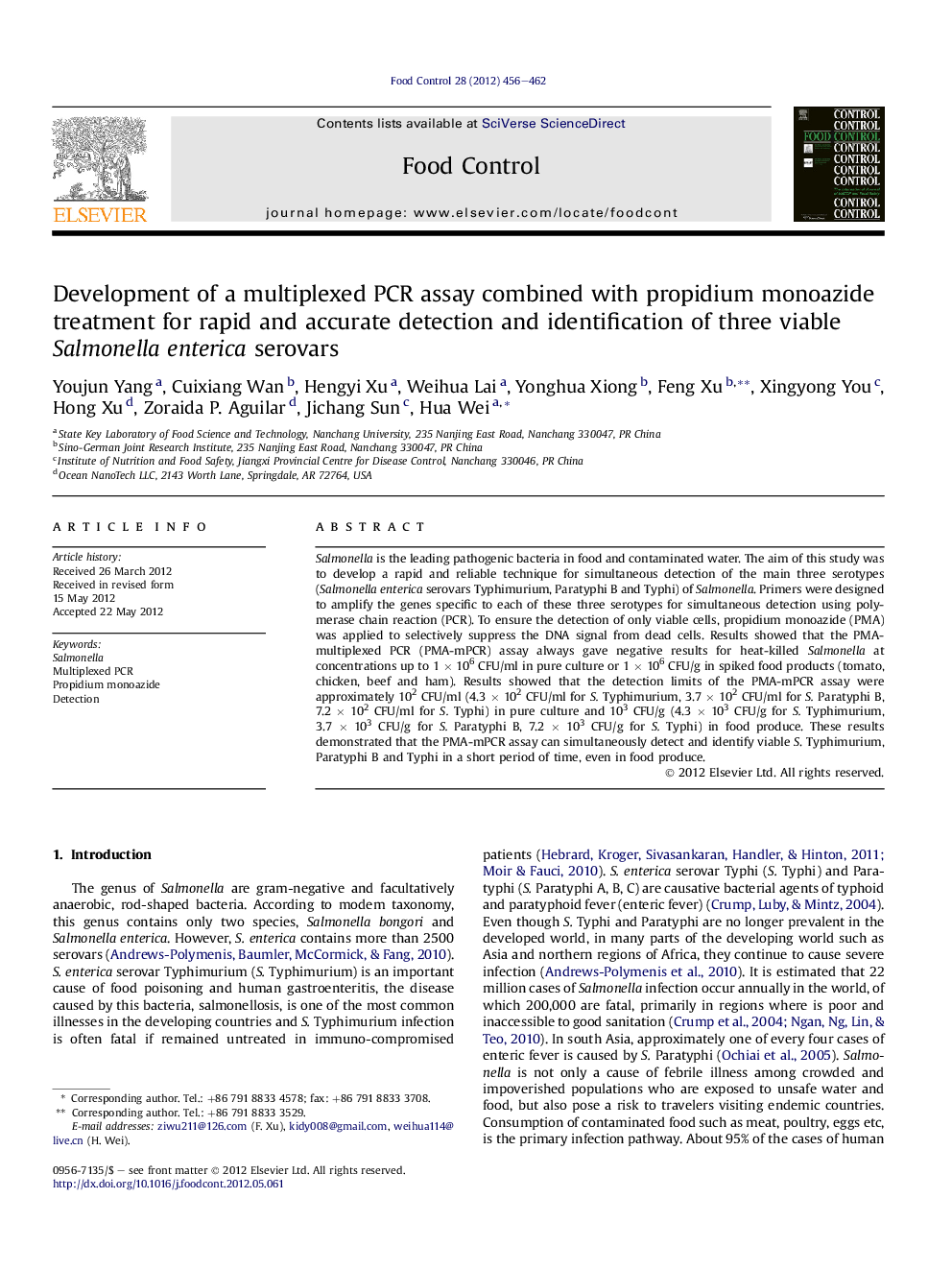| Article ID | Journal | Published Year | Pages | File Type |
|---|---|---|---|---|
| 6394370 | Food Control | 2012 | 7 Pages |
Salmonella is the leading pathogenic bacteria in food and contaminated water. The aim of this study was to develop a rapid and reliable technique for simultaneous detection of the main three serotypes (Salmonella enterica serovars Typhimurium, Paratyphi B and Typhi) of Salmonella. Primers were designed to amplify the genes specific to each of these three serotypes for simultaneous detection using polymerase chain reaction (PCR). To ensure the detection of only viable cells, propidium monoazide (PMA) was applied to selectively suppress the DNA signal from dead cells. Results showed that the PMA-multiplexed PCR (PMA-mPCR) assay always gave negative results for heat-killed Salmonella at concentrations up to 1 Ã 106 CFU/ml in pure culture or 1 Ã 106 CFU/g in spiked food products (tomato, chicken, beef and ham). Results showed that the detection limits of the PMA-mPCR assay were approximately 102 CFU/ml (4.3 Ã 102 CFU/ml for S. Typhimurium, 3.7 Ã 102 CFU/ml for S. Paratyphi B, 7.2 Ã 102 CFU/ml for S. Typhi) in pure culture and 103 CFU/g (4.3 Ã 103 CFU/g for S. Typhimurium, 3.7 Ã 103 CFU/g for S. Paratyphi B, 7.2 Ã 103 CFU/g for S. Typhi) in food produce. These results demonstrated that the PMA-mPCR assay can simultaneously detect and identify viable S. Typhimurium, Paratyphi B and Typhi in a short period of time, even in food produce.
⺠Multiplex-PCR based method was used to detection and identification Salmonella. ⺠PMA can selectively suppress the DNA detection from dead cells. ⺠Rapidly and specifically detect viable Salmonella in food produce by PMA-mPCR assay. ⺠The PMA-mPCR assay was a valuable tool to monitor potential Salmonella contamination.
